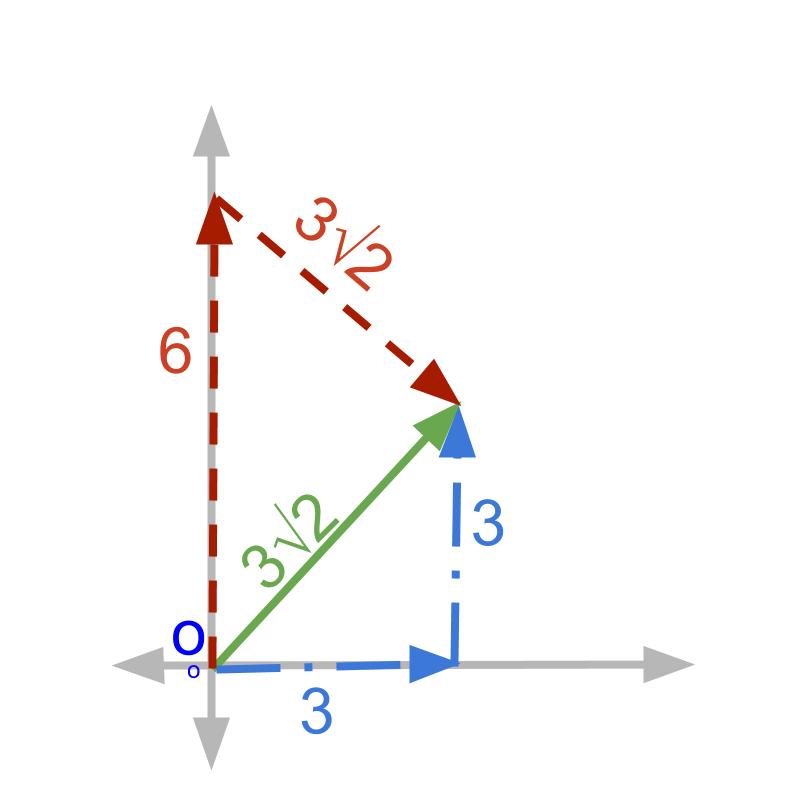
what you'll learn...
Overview
Vector as Sum of Vectors
» numerical expression in place of numbers
→ can be represented with or
All these represent the same number.
» Vectors as Linear combination of vectors
 → at angle
→ at angle
→ at + at
→ at + at
All these represent the same vector.
linear combination
We studied numerical expressions. The following expressions represent the same quantity.
A quantity can be equivalently represented with severals forms of numerical expressions.

Three persons, starting from a common point, are walking
•
Person A walks at an angle for meter
•
Person B walks meter at an angle and then 3 meter at an angle
•
Person C walks meter at an angle and then meter at an angle
To walk back to the starting point, all three has to walk 'same distance in the same direction'.
The three vectors given above are effectively the same vector in three different forms. A vector quantity can be equivalently represented by combination of several vectors.
The walk of Person A (at an angle for meter) is one vector quantity at angle
The walk of Person B () meter at an angle and then 3 meter at an angle ) is sum of two vector quantities at and at .
Note that person A’s and person B’s walks are specified by one vector quantity and two vector quantities. Still, they are at the same distance and direction from the starting point. Effectively, their return to the starting point can be specified by one identical vector quantity.
To understand this, Consider the example in scalar quantities. Person A has apples in a basket. Person B has apples in one hand and apple in another hand. Both has the same number of apples, which is understood as .
Given vectors
Note that is same as . So can be equivalently given as . Reiterating that A vector can be equivalently given as a sum of vectors.
summary
Linear Combination of Vectors: A vector can be equivalently represented as sum of vectors.
A vector can be equivalently given as the sum of vectors.
Outline
The outline of material to learn vector-algebra is as follows.
Note: Click here for detailed outline of vector-algebra.
• Introduction to Vectors
→ Introducing Vectors
→ Representation of Vectors
• Basic Properties of Vectors
→ Magnitude of Vectors
→ Types of Vectors
→ Properties of Magnitude
• Vectors & Coordinate Geometry
→ Vectors & Coordinate Geometry
→ Position Vector of a point
→ Directional Cosine
• Role of Direction in Vector Arithmetics
→ Vector Arithmetics
→ Understanding Direction of Vectors
• Vector Addition
→ Vector Additin : First Principles
→ Vector Addition : Component Form
→ Triangular Law
→ Parallelogram Law
• Multiplication of Vector by Scalar
→ Scalar Multiplication
→ Standard Unit Vectors
→ Vector as Sum of Vectors
→ Vector Component Form
• Vector Dot Product
→ Introduction to Vector Multiplication
→ Cause-Effect-Relation
→ Dot Product : First Principles
→ Dot Product : Projection Form
→ Dot Product : Component Form
→ Dot Product With Direction
• Vector Cross Product
→ Vector Multiplication : Cross Product
→ Cross Product : First Principles
→ Cross Product : Area of Parallelogram
→ Cross Product : Component Form
→ Cross Product : Direction Removed